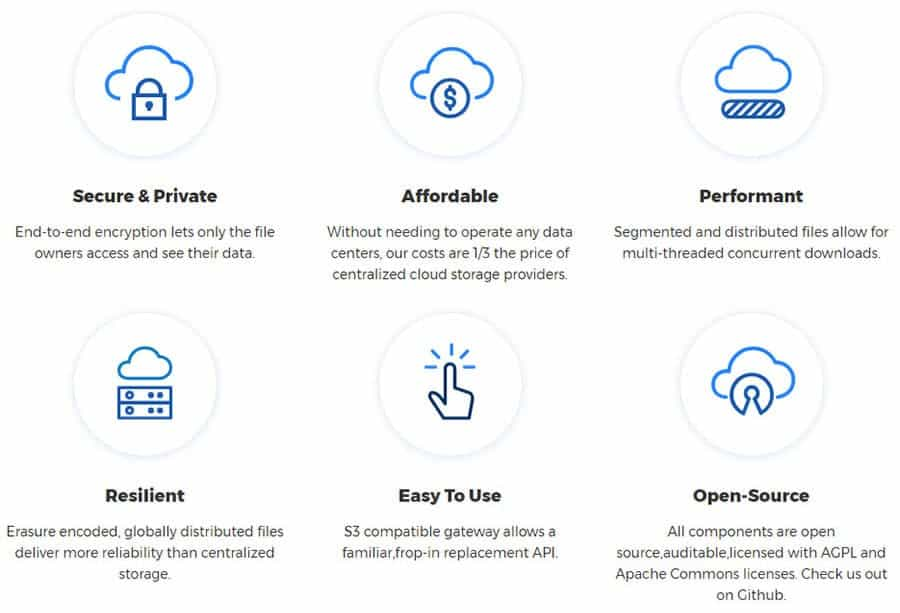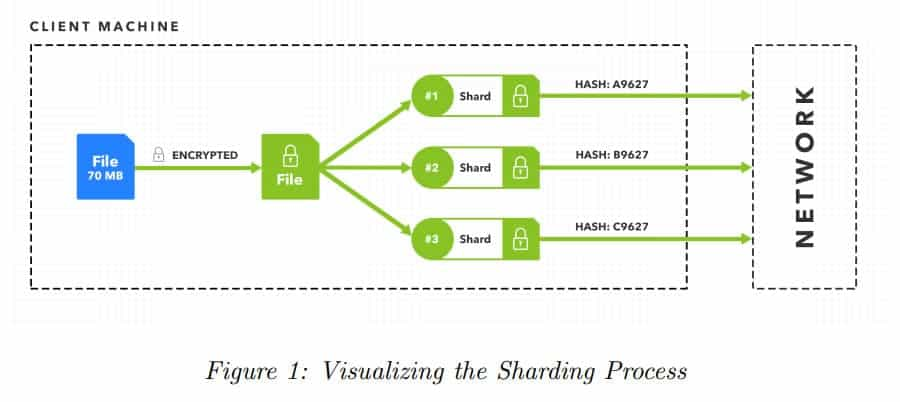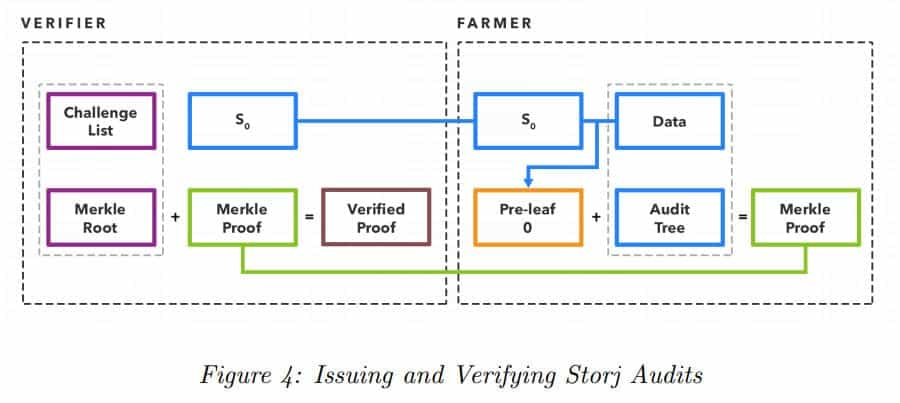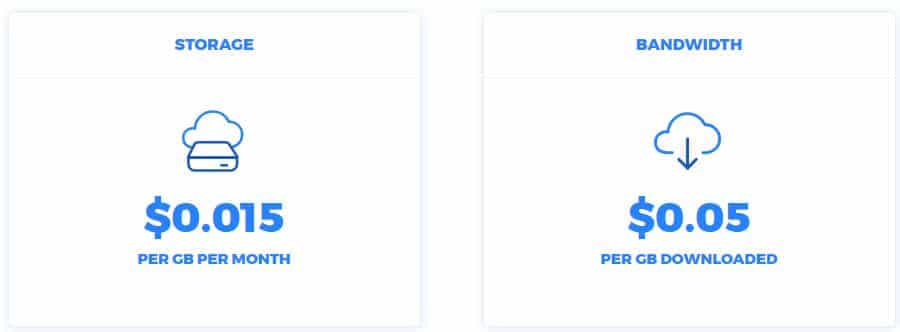Storj Review: Deep Dive into Blockchain Storage
Storj (pronounced "Storage") is a decentralised file storage system that aims to make use of all the excess capacity around the world in the form of unused hard drives and bandwidth.
People have lost a great deal of trust in large and centralised systems and file sharing is no different from that. Storj wants to make file sharing not only safer but also faster and much more cost effective.
However, can Storj really compete with the likes of large centralised companies such as Dropbox and Google drive and can they stand out among the host of blockchain storage projects?
In this review we will attempt to answer that by digging into the technology, team, roadmap and STORJ token prospects.
What is Storj?
Storj was one of the first projects to tackle storage on the blockchain. They use client-side data encryption and file sharding to store the files in a secure manner on a peer-to-peer network.
They also want to make is easy to use with an Amazon S3 compliant gateway. This will allow users to easily interact with the Storj network with a familiar user experience. Moreover, given that it will be decentralised, there is very little risk of data loss.

Storj is the open source project of a for profit company called Storj labs. Storj, the company, provides DaaS (Data-as-a-Service) to a average businesses and consumers. They also help by building tools and APIs for customers to be interact with the open source software.
Storj completed a $30m ICO which they did in an ERC-20 token sale back in 2017. They sold STORJ tokens which would be the utility token on the network. These would be used to pay for the storage requirements by the users.
The Storj network is also one of the few Ethereum ICO projects which has received the blessings of Vitalik Buterin. In fact, Vitalik was a contributor to the Storj whitepaper. According to Vitalik:
Distributed file storage systems like Storj have the potential to eliminate high markup costs and market inefficiencies and provide a much higher level of privacy, reliability and quality of service than we see today
They have also been growing their underlying network since their launch and they have over 150,000 nodes storage nodes that are part of it. These nodes cover more that 200 countries and are able to store over 150PB in capacity.
So what is the technology that is actually driving Storj and how is superior?
Storj Protocol
There are four important stages in the storage of data in the Storj network. These include the encryption of the data, the sharding of the data and then the distribution of it throughout the network.
Once the data is on the network, there have to be checks that are completed to ensure data integrity and availability. This is where the periodic audits on the Storj network come in.
Client-Side Encryption
Before you will be uploading your data onto the blockchain, it will have to be encrypted on your device. The data is encrypted through the use of the AES256-CTR algorithm. This is already quite secure but the scope exists for other types of encryption such as convergent encryption.
One of the main benefits for users of client-side encryption is that all information required to decrypt the files is kept away from the nodes (farmers). There is only one decryption key and it is controlled on the client machine.
Of course, there could be an instance where you would like to decrypt your files on a machine that was not used for the local encryption. This is where the Storj Bridge will come in.
The Storj bridge is the latest initiative which will allow users to store their keys on what are called "bridge" servers. There are a number of other powerful use cases for the bridge that we will cover later.
Sharding
You will no doubt have heard a lot of talk about "Sharding" lately as it relates to blockchains. However, sharding in the general sense is just the splitting of data into a number of different pieces. In this case, the data is the file that you have just encrypted.
There are many reasons why one would want to shard the data. Firstly, having the data distributed through a host of different nodes means that they can send and recall all of the shards at the same time. This will increase speed on the network.
Another benefit of sharding is that no "Farmer" on the network will hold all of the contents of your file. This means that even if they had the ability to decrypt the file (very unlikely) they could not read everything in the file.
Further adding to the privacy of the user with the Storj network is where the shards are stored on the network. There should be only one person who knows exactly where the shards have been stored and this is the person who has encrypted and uploaded it onto the network.

This is where their unique Kademlia hash table comes in. This distributed hash table will allow the user to effectively 'map' where the shards have gone. If they would like to access these tables, they will need a private key which will decrypt the network "map" and allow the user to access the pieces to their file.
There are also important redundancy checks that are built into the network in case of nodes going offline. This is through the use of Erasure coding and "Parity" shards. You can choose the total number of parity shards that will be used when you distribute it on the network.
The more redundancy shards that you choose, the more protection you have from loss. Storj has to keep an eye on all the redundant shards to make sure that there is not an excess of them that are clogging up the network. This is where the erasure coding algorithms come into play. You can read more about it in their whitepaper.
So, now you have your encrypted files in shards all across the network, how do you constantly verify exactly what is there? This is through the use of Proofs of Retrievability and periodic audits.
Proof of Retrievability
These proofs are used to guarantee that certain data is stored on a remote host within the network. These proofs are verified through a standard challenge / response process on the Storj network called audits or "heartbeats".
These audits are conducted with a cryptographic principle called Merkle trees and proofs. These are in themselves quite complicated but you can read more about these partial Merkle tree audits in the whitepaper.
What is important to understand though, is that the Farmers are required to prove that they still have all the shards that were sent their way. They have to cooperate with the audit if they intend to get paid for their storage.
The data owner will send a short challenge in the form of a hash to the farmer. If the farmer still has the data that it was sent then it can answer this request with the Merkle proof. This verifies that the file shard is still on the local node.

Hence, by using an ingenious audit and challenge / response mechanism, Storj can ensure that files are indeed stored as they were initially distributed without any missing data. Moreover, those farmers who regularly do not respond to these requests could have a bad "reputation" score that is attributed to them.
Now that you know how the Storj network functions technically, let's take a look at how you can practically make use of it.
Using Storj Share
As mentioned, the Storj network is currently being run by over 150,000 nodes all across the network. Storj is looking to greatly expand this with the next release of their platform by the end of 2018.
If you wanted to be part of this new Storj network when it is finally released then you can signup for the waitlist that they currently have on their site. You can either apply to be placed on the user waitlist or on the farmer waitlist.
In order to get an idea of the costs of the network, Storj currently has some estimates from their website below. These are the fees that the user can expect to pay in STORJ tokens.

These fees are only paid for the storage and bandwidth that you use which is unlike the other cloud storage providers. For example, when you open an account on dropbox, for their "plus" plans and above, you are required to purchase a monthly storage amount.
Even if you used up all your storage allowance on dropbox, the cost per GB / month is almost 9 times that of the Storj network. Of course, you also have the problems that are associated with security and speed on a centralised system like dropbox.
When the Storj Share is released at the end of the year, it will have an easy to use graphical interface that farmers and users alike can make use of. You will be able to store and upload files as easily as you do with any other cloud style service.
Storj Team Members
As mentioned, the people behind the Storj open source project work at Storj labs. The company is based in Atlanta, Georgia and was founded by Shawn Wilkison in 2014. He got the idea when he attended the Texas Bitcoin Hackathon during the same year. Shawn has an entrepreneurial background and started one of his first businesses when he was in high school.

He was joined by a co-founder John Quinn who serves at the Chief Revenue Officer. He has a different background having worked for over 15 years in tech investment banking. He was previously the Director of Global Markets at Deutsche Bank OOO and has spent his time between the US and Moscow.
The Storj team has grown a great deal since then with over 46 members as of today. They also have a large community group that help to drive awareness and adoption of Storj accross social media.
STORJ Token
The STORJ native token is based on the ERC-20 standard and is will be the utility token in the file sharing ecosystem. During the crowdsale in 2017, they sold $30m worth of STORJ which has a total supply of 500m tokens.
This represented 25% of the total token supply and implied an ICO price of 0.5 USD per STORJ token. During the bull run in late 2017 and early 2018 STORJ reached prices of $2.37. However, it was caught up in the rest of the market sell off and is currently sitting at 0.33.

This is not as bad as many of the other coins that raised ICOs last year and there is a strong project and team behind STORJ. If they get a massive amount of demand from users of their new platform in late 2018, it could help bough the price.
If you were thinking of buying STORJ coins, the most volume appears to be on the Cointiger exchange. However, if you would prefer to use a more familiar exchange, you could get them on exchanges such as the Binance Exchange and the Huobi Exchange.
Given that these are ERC-20 standard tokens, once you have bought them you can easily store them in a compatible wallet. The most likely contenders are either MyEtherWallet or MyCrypto.
Roadmap
Something else that is likely to help drive adoption in Storj is a development pipeline that keeps the community enthusiastic. In the case of Storj, there are some interesting near and medium-term milestones we can keep our eyes on. Below is the roadmap that they have on their website.

As one can see, it is heavily focused on the release of their v3.0 of the Storj network. This is the network that you can currently place yourself on a waitlist to participate in. In fact, at the time of writing Storj had just released the news of the release of the private Alpha of v3.0.
They are currently running this in a test environment so that they can refine the product and make sure that everything is stable. The next step in this is the release of the whitepaper of v3.0.
This is important as it will give the users and farmers more insight into how the network will operate and what upgrades and improvements have been included. Once they release the Alpha version of the update to the public, it will be interesting to observe the uptake in the number of farmers and users.
This is important as a decentralised file storage system such as Storj's is more effective the more participating nodes there are.
There is also the possibility of file sharing among participants in the Storj protocol. This could be facilitated through the use of the already established "Bridge" architecture that we mentioned above.
Given that the decryption capability is currently on these servers, it is not a difficult next step to allow other participants to access your files with the keys on these servers. Think Dropbox and Google file sharing but decentralised.
Competition
Although we are aware of the large centralised cloud storage competitors, there are also quite a few blockchain projects that are trying to create their own storage networks.
For example, one of the most well-known competitors in the crypto space is Siacoin. Siacoin went live with an early beta version of the project in March of 2015. Hence, the project has been around longer than Storj and they are currently ranked at 37 in market cap.
Storj may have a slight competitive advantage in storage price though as 1 TB of storage on Siacoin costs about $2. Siacoin is also working on further development of version 1.4.0 of the software.
Other competitors that Storj is up against include the established MaidSafe project which was actually started in 2006 even before cryptocurrencies. The project developed the Safe Network with architecture that is not too dissimilar to that of the Storj network.
Lastly, you have more potential competition coming on board as Filecoin attempts to come to market. This blockchain project was the largest ICOs last year as they raised over $257m.
Conclusion
Storj is no doubt one of the more interesting blockchain projects around currently. They have a legitimate use case for their tokens which is currently undergoing a major upgrade. Moreover, they are being driven by a large and competent team.
The need for a decentralised and secure cloud storage network is clearly there. Users want a safe place to store their important data and they want a place to earn extra money for their excess storage.
Storj will face strong competition but as long as Storj is able to stay the course and meet their roadmap milestones, they are likely to increase usage and adoption. We will keep an eager eye on the public release of v3.0.
In summary, a strong project with competent backing. We can see why Vitalik Buterin was willing to put his name and input behind Storj.
Disclaimer: These are the writer’s opinions and should not be considered investment advice. Readers should do their own research.
